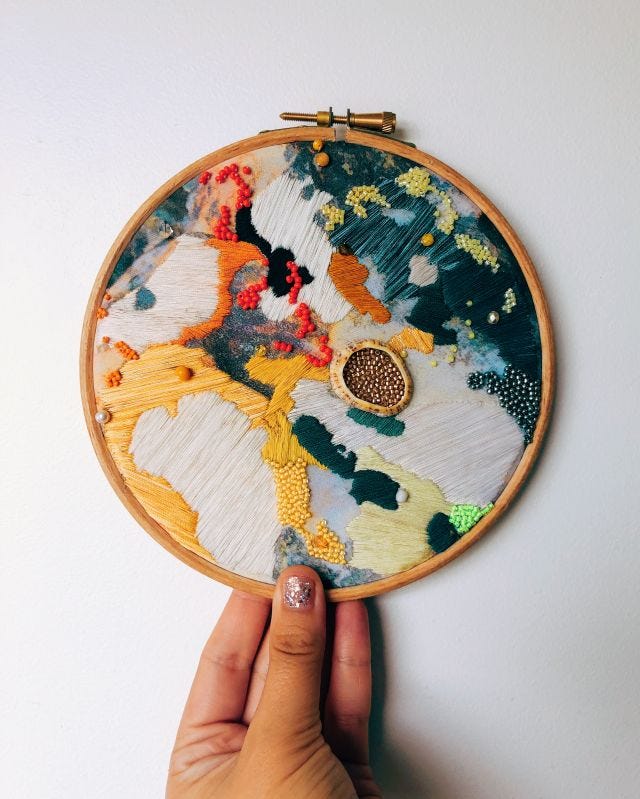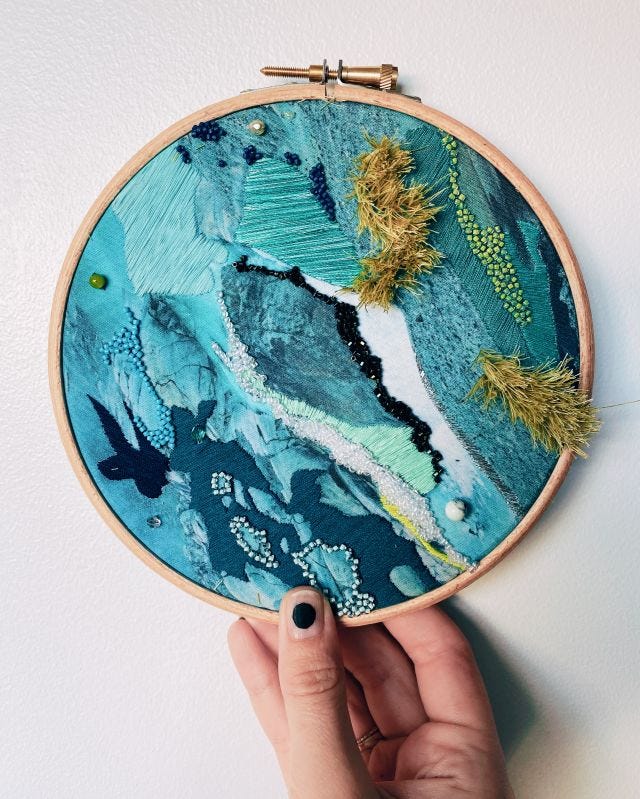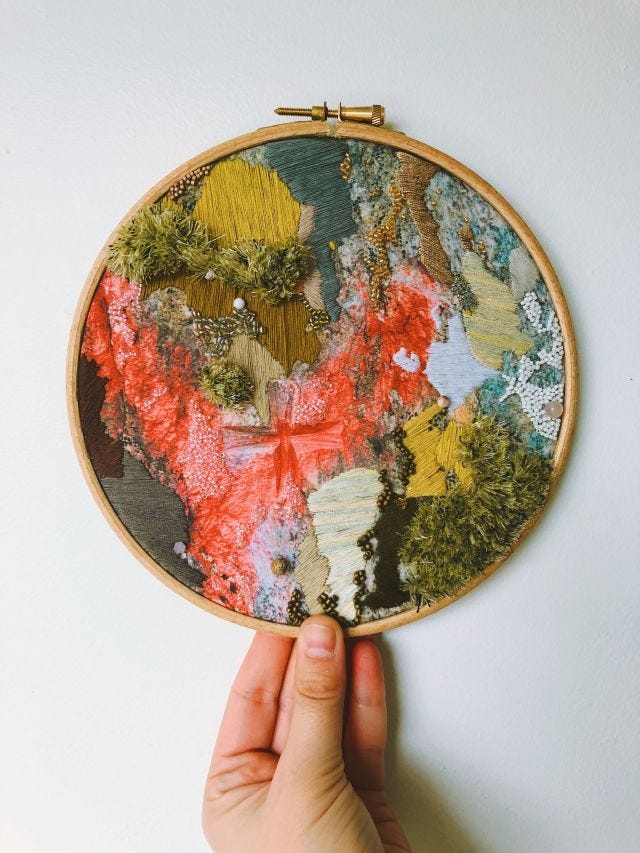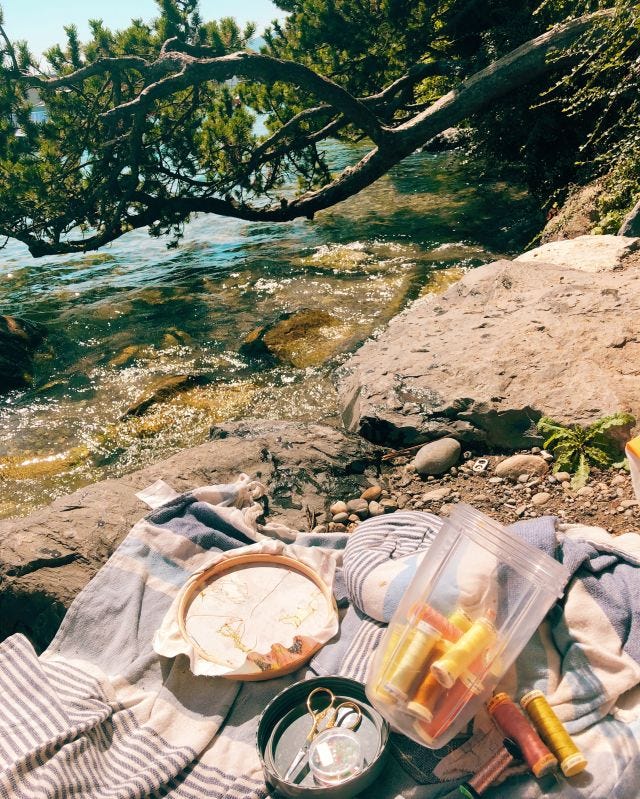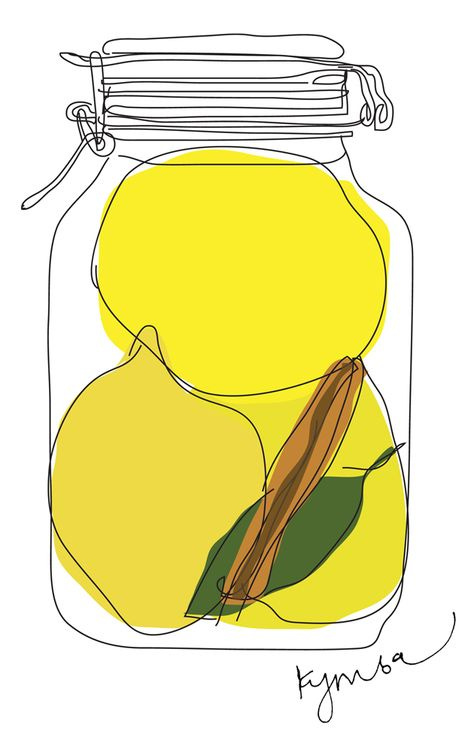Edition 2 — The lazy, hazy days of summer
Everything is cyclical. Nothing reminds us more of this than the seasons shifting. Those of us in the northern hemisphere are clutching to the final weeks of summer with all our might.
Edition 2 — The final lazy, hazy days of summer
Everything is cyclical. Nothing reminds us more of this than knowing the seasons are about to shift. Whilst southern hemisphere dwellers welcome the suns warmth on icy landscapes, those of us in the northern hemisphere are clutching to the final weeks of summer with all our might.
It has been a bittersweet summer in London, despite an abundance of long, warm days. The usual tropes of August have been put on hold. For most of us, there has not been (and will not be) international summer jaunts to clearer waters and warmer sands. The beaches of Kent are incomparable to Grecian coastlines.
Without the usual demarcations of summer, we have had to collectively revel in simpler (but equally special) delights. The joy of oysters at Borough Market. The feeling of grass beneath our toes in the park. A bike ride across Southwark Bridge at dusk. Coffees in the morning sun, a new sunhat, late dinners in a sunny kitchen, the delight of falling into a summer read, idly watching clouds in the park, sudden rainstorms after a hot day — the list of summer thrills go on and on.
I haven't had to travel far this month to relish summer vibes. In July, I spoke to fibre-artist Emily Botelho about her process, practice, and inspiration: coastlines and rockpools. I was tickled to contribute a feature on her work to Dovetail magazine, a publication that celebrates the intersection of art, design, and craft. My culinary canon was elevated this year with the introduction of preserved lemons to my repertoire. In an effort to inspire your own food-journey I decided to write about it this edition. Brit Bennett's stellar novel The Vanishing Half transfixed me. Reading the novel wasn't enough so I turned to London Review of Books for more. Finally, school is back in September which means I am back behind my desk to teach 'New Approaches to Curating Collections' for Node Centre to inspire fresh tools for story-telling.
Illustration by Chinran for Blank Lab
Emily Botelho feature for Dovetail magazine
Emily Botelho, a Manchester-based fibre-artist, first started stitching in 2017. With a background in photography and no experience of stitching, or crafting, Emily leaned into embroidery during a difficult time in her life and now operates as a full-time creative. At first, she was inspired by the coastlines and rockpools of Wales where she spent a lot of time. Now, she finds inspiration small details everywhere she looks, from hikes in Switzerland to the urban streets of New York.
I discovered Emily's work in 2019 and have followed her Instagram account @salt_stitches avidly ever since. Like 115k others, I am drawn to her dreamy sea-scapes and textured works. Each piece is unique with its own colour palette and embellishments. Some are adorned with precious gems, others with beach glass, shells, or beads.
During the height of quarantine, I noticed a @salt_stitches post advertising DIY kits. DIY kits were not a new feature for Emily to sell, however, their popularity under lockdown was apparent. I should also mention they are not a traditional do-it-yourself-kit. The concept is a little loftier: here are the materials, have a play and see what happens kinda kits. Engaging with Instagram in a time of COVID is an interesting process. It seemed as though people were leaning into creativity now more than ever.
On the one hand, I was thrilled to see a pro-arts pattern emerging during a time of crisis. I have been saying this for years! However, I have my own bias and wanted to hear about the experience from an artists perspective. As such, I had the pleasure of meeting with Emily online and interviewing her for Dovetail. We talked about her process and her practice, as well as her creative and professional experiences in lockdown.
'Salt and Stitches: Emily Botelho's nature-inspired embroidery', Dovetail magazine, August 2020. Read the full feature profile here.
All images courtesy Emily Botelho
You can't preserve sunshine, but you can preserve lemons
I had eaten an abundance of preserved lemons and applauded their brilliance long before I ever dreamed of trying to make them myself. I experienced their wonder (read: ate) first hand when I travelled through Morocco in 2017. They were on every menu I ate at, from Tangier through the Atlas mountains and down to Marrakesh. I know, I'm jealous of me, too.
Preserved lemons are the star ingredient of most Moroccan and Middle-Eastern kitchens. Of course, they are a favourite for tagines and stews, but also make a great addition to salads and sauces too. Preserved lemons give any and every dish an umami edge that elevates it from 'yum this is good' to 'oh my goodness this is incredible.' So, when I had some jars and a spare afternoon I thought it was the perfect time to try it myself.
You will need:
3 Meyer or Eureka lemons, preferably unwaxed and organic
A ton of salt. Buy a box of Maldon and don't worry about the exact amount, just use what works best for you as per the instructions
1 sterilised pint-sized glass jar that can be sealed
Pestle
Clean the lemons. Cut the end off each, then quarter the lemon without slicing it all the way through. So, you have 4 wedges that are joined at the end.
The next part can be a little messy. Fill each opening of the lemon with at least 1 heaped tablespoon of salt. You are essentially covering all interior surfaces of the lemon with salt.
Place the lemon into your glass jar, sliced end first. Use a pestle to press down on the lemon. This action releases lemon juice and creates space for additional lemons. Continue this pattern with additional lemons until the jar is filled. If you have excess salt on your chopping surface, add it to the jar before you seal it.
As you add more lemons to the jar, note the level of lemon juice rises. It is worth noting that as your lemons cure over time, the salt acts as an agent that extracts moisture. This means the level of liquid in the jar will increase even after you have sealed it. Some folk don't mind this and like to seal their jars when it is filled the very top. I have trialled this method on occasion and found my jars leaked slightly, which wasn't ideal. As such, I like to cover the lemons with liquid, but leave a little room at the top of the jar for excess juice during the curing phase.
Once your jar is full, seal the jar and let it sit in a cool, dry environment for at least 4 - 6 weeks before they are ready to be enjoyed. If you fancy it, agitate the jar every other day to keep the curing process in motion.
Preserved lemons make the perfect gift for friends and family. Or for yourself if you need a little sunshine in your life. They are a perfect addition to baked salmon, pasta sauces, salads, and anything else you can imagine.
Image via Kymba graphic designer
Read it: The Vanishing Half, by Brit Bennett
The Vanishing Half is a novel about sisterhood, identity, and race. Two sisters, twins, run away from their tiny Louisiana hometown, Mallard when they are 16. At 30, one sister returns, whilst the other has vanished into a new life, a new identity. Central to the narrative of this story is the theme of race. It is more than an undercurrent; it sits on the surface, exposing social structures and prejudice not only of the time in which it was set but also present day.
Speaking to Joanna Biggs for London Review of Books, Bennett states ‘I wanted to write a book that was not just about Black pain...but also about Black love.’ The novel is set weeks after Martin Luther King's assassination. It is pertinent to note it was released one week after George Floyd was choked to death by a Minneapolis police officer.
I gobbled the book up in a greedy rush during a long weekend at the beach. It was not too dissimilar from how Joanna Biggs describes her experience in her review of the book. Biggs 'turned page after page until they seemed to turn themselves.' Analysing the novel's nuance and reading Bennett's characters with depth and understanding, I enjoyed reading Biggs' review almost as much as I loved reading the book.
Joanna Biggs, 'What she wasn't', London Review of Books, 13 August 2020
Image via Press Reality
Learn with me!
The next session of 'New Approaches to Curating Collections' starts on 10 September. I designed this course for arts professionals and collectors alike who are looking to sharpen their curatorial tool-kit. Each week, we meet for 2-hours to explore real-world case studies and discover fresh perspectives on how to curate, interpret, conserve, develop, and fund collections. I have filled this course with all the juicy content curators need to rejuvenate collections and keep their perspectives fresh.
Having taught this course for nearing on 2-years I am proud to say it's lessons are more relevant now than ever before. Covid-19 has disrupted the blockbuster exhibition model. As such, museums and galleries alike are turning to their collections to search for new ways to tell stories and share ideas.
Now is the perfect time to revise your strategy and learn how to curate collections in the most engaging way possible that leaves an impression long after the exhibition closes. Book your place by heading to Node Centre School for Curatorial Studies and enrol before 6 September.
Thanks for reading!
Let's keep the conversation going - follow me @art.writing.projects or visit me online to connect. Want to share with a friend? Invite your network to sign-up here.
Or, respond to this email with your thoughts and comments.





